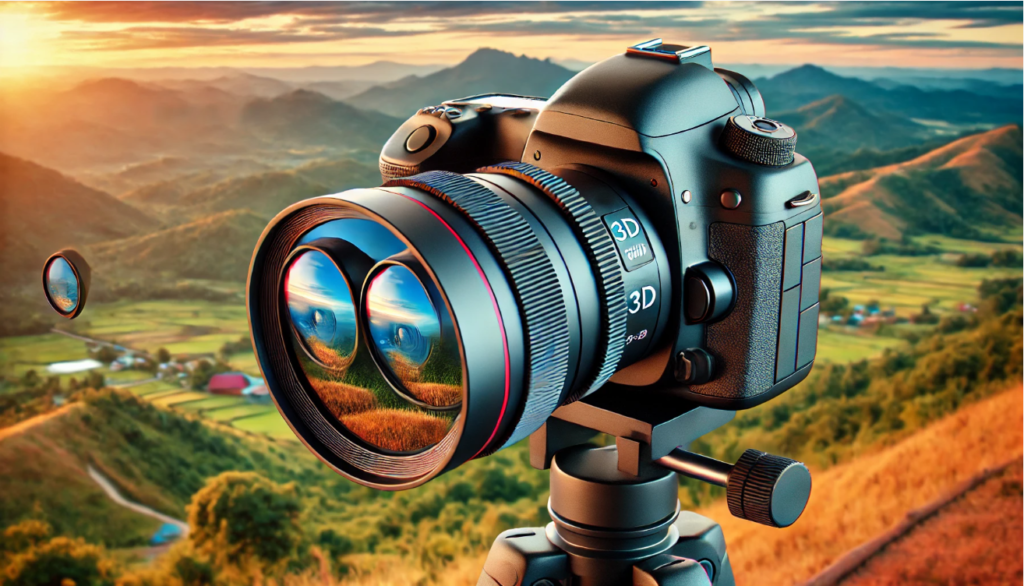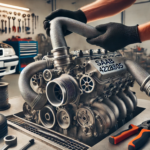Introduction to 3D Photography
3D photography, also known as stereoscopic photography, brings depth and realism to images, capturing scenes as our eyes perceive them in real life. This technique, rooted in the 19th century, has evolved significantly with advancements in digital technology. Today, tools like the Loreo 3D DSLR Lens make it accessible for photographers of all levels, offering an exciting way to explore creativity and storytelling.
What Is the Loreo 3D DSLR Lens?
The Loreo 3D DSLR Lens is an innovative accessory designed to transform standard DSLR cameras into powerful tools for capturing 3D images. By utilizing a dual-lens system, it captures two slightly offset images simultaneously, mimicking the way human eyes perceive depth. This technology enables users to produce immersive and lifelike photographs, ideal for enthusiasts and professionals eager to experiment with stereoscopic imagery.
Key Features of the Loreo 3D DSLR Lens
Parallax Compensation System
One standout feature of the Loreo 3D DSLR Lens is its focus-coupled parallax compensation system. This mechanism adjusts the angle of the images automatically as you focus, ensuring perfect alignment and reducing distortions in your 3D photographs.
Compatibility
The lens is available in various mounts to support popular DSLR brands, including Canon, Nikon, Pentax, Sony, and Olympus. This flexibility ensures that users can enjoy 3D photography without investing in additional equipment.
Compact and Lightweight Design
Weighing significantly less than traditional 3D cameras, the Loreo 3D DSLR Lens is portable and easy to use. Its “Lens in a Cap” design simplifies the attachment process, making it a convenient choice for on-the-go photographers.
| Feature | Description |
| Focal Length | 40mm |
| Stereo Base (Distance) | 90mm |
| Compatibility | Canon, Nikon, Sony, Olympus, Pentax, Panasonic |
| Aperture | Fixed at f/11 for optimal depth of field |
How to Set Up the Loreo 3D DSLR Lens
Mounting the Lens
Attaching the Loreo 3D DSLR Lens to your camera is straightforward. Align the lens mount with your DSLR’s bayonet fitting and twist gently until it locks securely into place. Ensure that the lens is compatible with your camera’s format (APS-C or Micro Four Thirds).
Adjusting Camera Settings
Once mounted, set your DSLR to manual mode. Adjust the ISO settings to balance the fixed aperture of f/11, and select a suitable shutter speed based on lighting conditions. This ensures the best image quality for your 3D captures.
Capturing Stunning 3D Photographs
Best Practices for Shooting
When using the Loreo 3D DSLR Lens, choosing the right subjects and environments is crucial. Stationary objects, landscapes, and portraits work exceptionally well. Ensure adequate lighting to maximize the depth effect, and experiment with different compositions to enhance the 3D realism.
Overcoming Challenges
Capturing 3D photographs may present challenges, such as misaligned images or inadequate lighting. To address these issues, use a tripod to stabilize your shots and shoot in well-lit conditions whenever possible.
Post-Processing 3D Images
After capturing your 3D photographs, the next step involves processing them for viewing or sharing. Popular software like StereoPhoto Maker or Adobe Photoshop can help align and merge the images into a stereoscopic format. Export the images as side-by-side JPEGs or anaglyphs for versatile viewing options.
Viewing 3D Photos
Methods for Viewing
- Using Loreo 3D Viewers: These compact viewers are designed specifically for side-by-side 3D images, providing an affordable and straightforward viewing solution.
- Digital Viewing Devices: Specialized screens and VR headsets can display your 3D images with unparalleled depth and clarity.
- Print Options: Convert your digital images into lenticular prints to enjoy physical 3D photographs.
Comparison with Other 3D Photography Tools
Loreo 3D Lens vs. Panasonic Lumix H-FT012
While the Panasonic Lumix H-FT012 is a dedicated 3D lens, it’s significantly more expensive and lacks the compatibility and simplicity of the Loreo 3D DSLR Lens.
Loreo 3D Lens vs. Fujifilm FinePix Real 3D W3
The Fujifilm FinePix Real 3D W3 is an all-in-one 3D camera, making it convenient but limiting for those who already own DSLR cameras. The Loreo lens provides a more cost-effective alternative for DSLR users.
Maintenance and Care Tips
Keeping the Loreo 3D DSLR Lens in pristine condition ensures its longevity. Clean the lens surface with a microfiber cloth to avoid scratches. Store it in a protective case when not in use, and avoid exposing it to extreme temperatures or moisture.
FAQs
- Can the Loreo 3D DSLR Lens be used for video recording?
Yes, it’s possible to record 3D videos, but ensure your DSLR supports video capture. - What is the ideal distance for 3D photography with the Loreo lens?
The lens works best for subjects between 1.5 meters and infinity. - Are there any smartphone adapters for the Loreo 3D lens?
Currently, the lens is designed for DSLR cameras, but third-party adapters may offer smartphone compatibility. - Is the Loreo 3D lens suitable for low-light photography?
Due to its fixed aperture of f/11, adequate lighting is recommended for optimal results. - Can I use the Loreo 3D lens with a mirrorless camera?
Yes, with an appropriate adapter, it’s compatible with mirrorless systems.
Conclusion
The Loreo 3D DSLR Lens is a versatile and innovative tool that democratizes 3D photography, making it accessible to all DSLR users. With its unique features, compatibility, and ease of use, this lens offers an exciting gateway to the world of stereoscopic imagery. Whether you’re a hobbyist or a professional, the Loreo 3D DSLR Lens provides endless creative opportunities.
Recommended Articles
Saab 4228805 Hose: Comprehensive Guide
$50 Towing Near Me: Your Ultimate Guide to Affordable Towing Services
The Ultimate Guide to Starhoonga: Your Personalized AI Companion
Mastering the Spaghetti Western Look with Dehancer: A Comprehensive Guide
Gradus Foringai: The Ultimate Guide to Comprehensive Flooring Solutions



